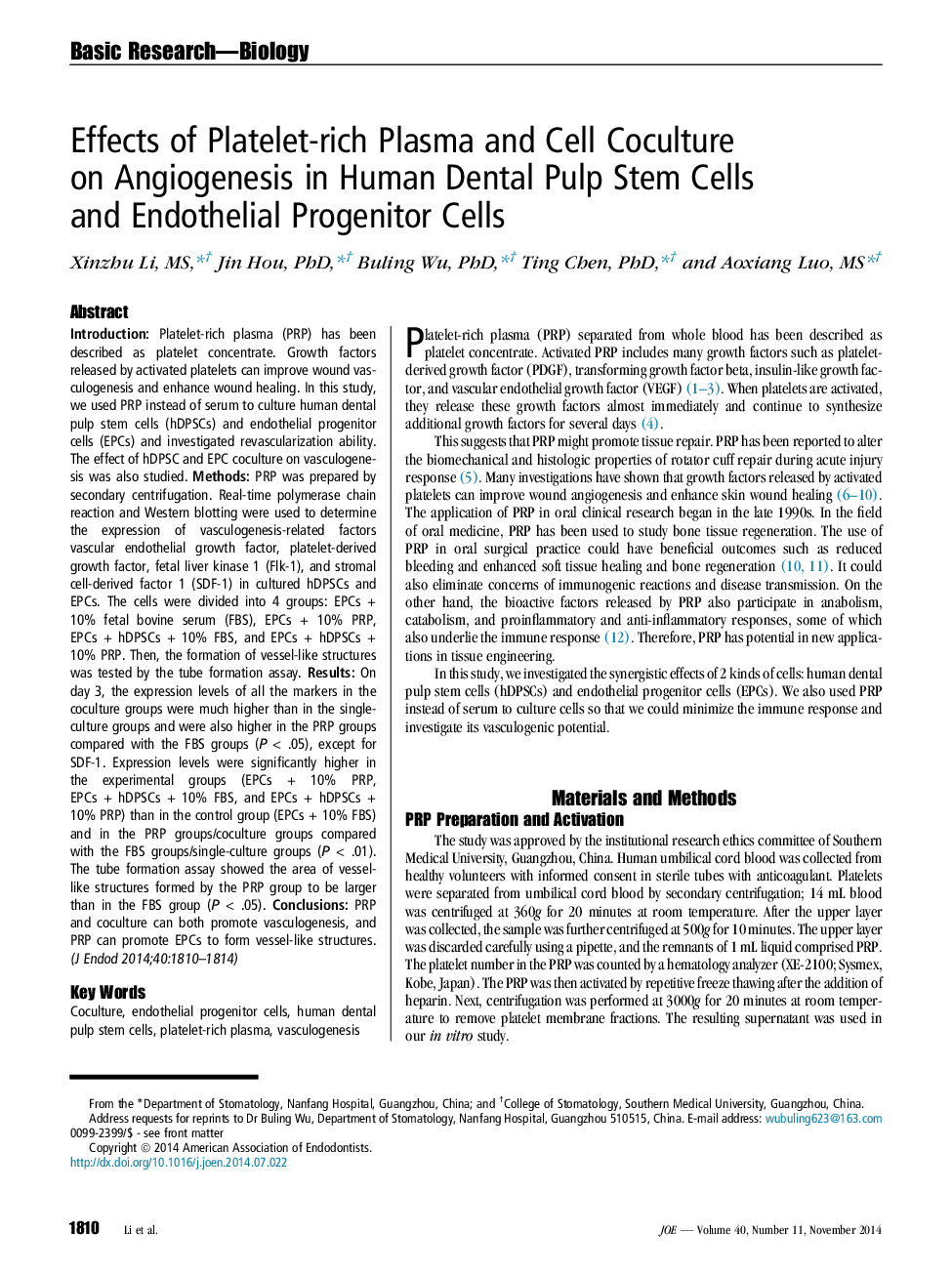| کد مقاله | کد نشریه | سال انتشار | مقاله انگلیسی | نسخه تمام متن |
|---|---|---|---|---|
| 3146633 | 1197304 | 2014 | 5 صفحه PDF | دانلود رایگان |
• We culture 2 kinds of cells (human dental pulp stem cells and endothelial progenitor cells) and prepare platelet-rich plasma successfully.
• We coculture human dental pulp stem cells and endothelial progenitor cells to investigate the potential effects on vasculogenic differentiation.
• We confirm that platelet-rich plasma not only maintains the growth and proliferation of cells but also promotes vasculogenesis.
• We confirm that coculture can promote vasculogenesis.
• Thus, platelet-rich plasma can be used in tissue engineering and might even be applied in tooth regeneration in the future.
IntroductionPlatelet-rich plasma (PRP) has been described as platelet concentrate. Growth factors released by activated platelets can improve wound vasculogenesis and enhance wound healing. In this study, we used PRP instead of serum to culture human dental pulp stem cells (hDPSCs) and endothelial progenitor cells (EPCs) and investigated revascularization ability. The effect of hDPSC and EPC coculture on vasculogenesis was also studied.MethodsPRP was prepared by secondary centrifugation. Real-time polymerase chain reaction and Western blotting were used to determine the expression of vasculogenesis-related factors vascular endothelial growth factor, platelet-derived growth factor, fetal liver kinase 1 (Flk-1), and stromal cell-derived factor 1 (SDF-1) in cultured hDPSCs and EPCs. The cells were divided into 4 groups: EPCs + 10% fetal bovine serum (FBS), EPCs + 10% PRP, EPCs + hDPSCs + 10% FBS, and EPCs + hDPSCs + 10% PRP. Then, the formation of vessel-like structures was tested by the tube formation assay.ResultsOn day 3, the expression levels of all the markers in the coculture groups were much higher than in the single-culture groups and were also higher in the PRP groups compared with the FBS groups (P < .05), except for SDF-1. Expression levels were significantly higher in the experimental groups (EPCs + 10% PRP, EPCs + hDPSCs + 10% FBS, and EPCs + hDPSCs + 10% PRP) than in the control group (EPCs + 10% FBS) and in the PRP groups/coculture groups compared with the FBS groups/single-culture groups (P < .01). The tube formation assay showed the area of vessel-like structures formed by the PRP group to be larger than in the FBS group (P < .05).ConclusionsPRP and coculture can both promote vasculogenesis, and PRP can promote EPCs to form vessel-like structures.
Journal: Journal of Endodontics - Volume 40, Issue 11, November 2014, Pages 1810–1814
